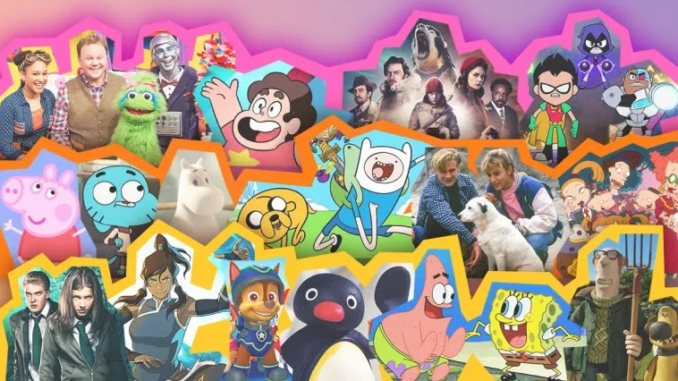
By Rami Mansi
Children’s shows have had a steady decline in recent times due to the lack of attention they grab in their designated age groups; this can be attributed to the rise in new technologies. But those Saturday cartoons used to be a defining feature in explaining children’s foundations in humor and education, even in how they function as tiny humans. Adults who grew up on these shows developed a sense of nostalgia and consider these shows as a fundamental part of having a childhood.
Kids shows like “Sesame Street” are loved and respected as powerful children’s media genre examples. However, some shows don’t experience the same prowess, such as “My Life As A Teenage Robot,” a show that was headed by Nickelodeon and revolved around a robot in the form of a teenage girl as she tries to live out her human life while batting the evils of highs school. Yet like this show and many others, there’s a formula to follow and one miscalculation can lead to your show being forgotten and not having an impact on many childhoods.
This raises a question: How does child-friendly media define a generation? How is the development of animation furthering kids’ love for the present technologies?
Let’s take a look at what shows impacted each generation. The ’90s were defined by popular shows such as “Reading Rainbow,” “Barney & Friends,” and “The Magic School Bus.” These shows focused on entertaining kids while impetuously discussing worldwide themes with the younger generation. Some productions stayed true to their mission of delivering childhood animation to fruition, “Pokémon” and “Blues Clues” being at the forefront of this goal. 90’s kids shows were exactly that, shows for kids with child-friendly themes. Most shows stayed in their lane with thematic scenes and focus.
Towards the end of the ‘90s, new shows took on more mature themes and began writing scripts that appealed not only to the designated age groups but to an older audience. Late 90’s shows such as “Recess,” “Hey, Arnold,” and “Franklin,” brought more mature themes such as themes of love, puberty, and even politics in Recess. and messages of pre and post-teenagehood to the front and center stage.
The turn of the century ignited a cultural shift within the media. Teenagers in media became subject protagonists by the 2000s, which in turn led children’s media in different directions. There were the rated Y-7 shows; usually animated and filled with bright colors and nursery rhymes, and those of the PG rating, characterized by teenage protagonists and darker thematic scenes.
The Y-7 shows in the 2000s included “Spongebob Squarepants” and “The Fairly Odd Parents,” enticing audiences with light humor and interesting plot lines. PG shows like “Teen Titans,” “Ben 10,” and “Avatar: The Last Airbender” primarily included action scenes that entranced viewers, ditching the innocence of childhood, and delving into the idea of suspense.
Now, with all these shows airing, the biggest competition between television shows isn’t each other, but the rise of technology. This has caused another branch to form in the tree of children’s television: the show that distracts kids and does not educate, and the show that pays close attention to detail with many educational features within the show’s premise.
Misguided forms of media stem from YouTube channels based on delivering education through nursery rhymes and attention-grabbing features. A prime suspect is the controversial yet extremely popular channel “Cocomelon,” which started as a wholesome attempt to help parents worldwide, yet the “solution” was discovered to have overstimulating colors and characters leading children to become addicted to watching it, according to the NY Post. The cinematography of animation cannot be easily toyed with, especially one that leans into a younger audience.
Shows like “Cocomelon” birthed a variety of internet shows, some of which can not be seen on cable television. This change from cable to YouTube and other tech media adds up to a whopping loss of cable television, deals, and more additions to the newest tablets and a YouTube Kids subscription.
There are however still shows that are worth the kids’ hype; One case of a successful kid show in the 2020s is “Bluey.” A show that demonstrates the very definition of a kid’s show: educational, battles real-life issues, entertaining for all ages, and subjectively very funny with a clever sense of humor.
Children’s television has always been a third teacher to children for so many years. It truly is remarkable how kids’ shows are used as a character of growth in kids’ livelihoods. If you read this and become overwhelmed with nostalgia, why don’t you watch that old episode of “Phineas and Ferb” and find out what Phineas and Ferb are gonna do today?
